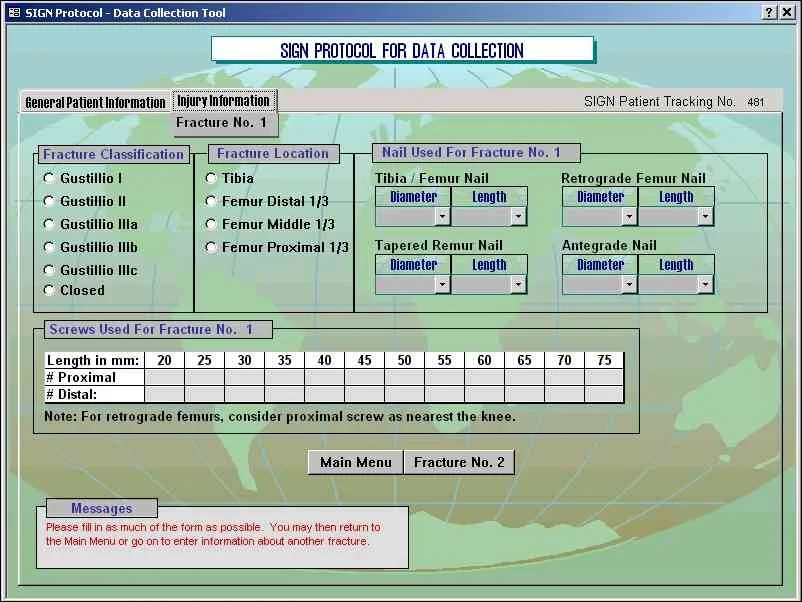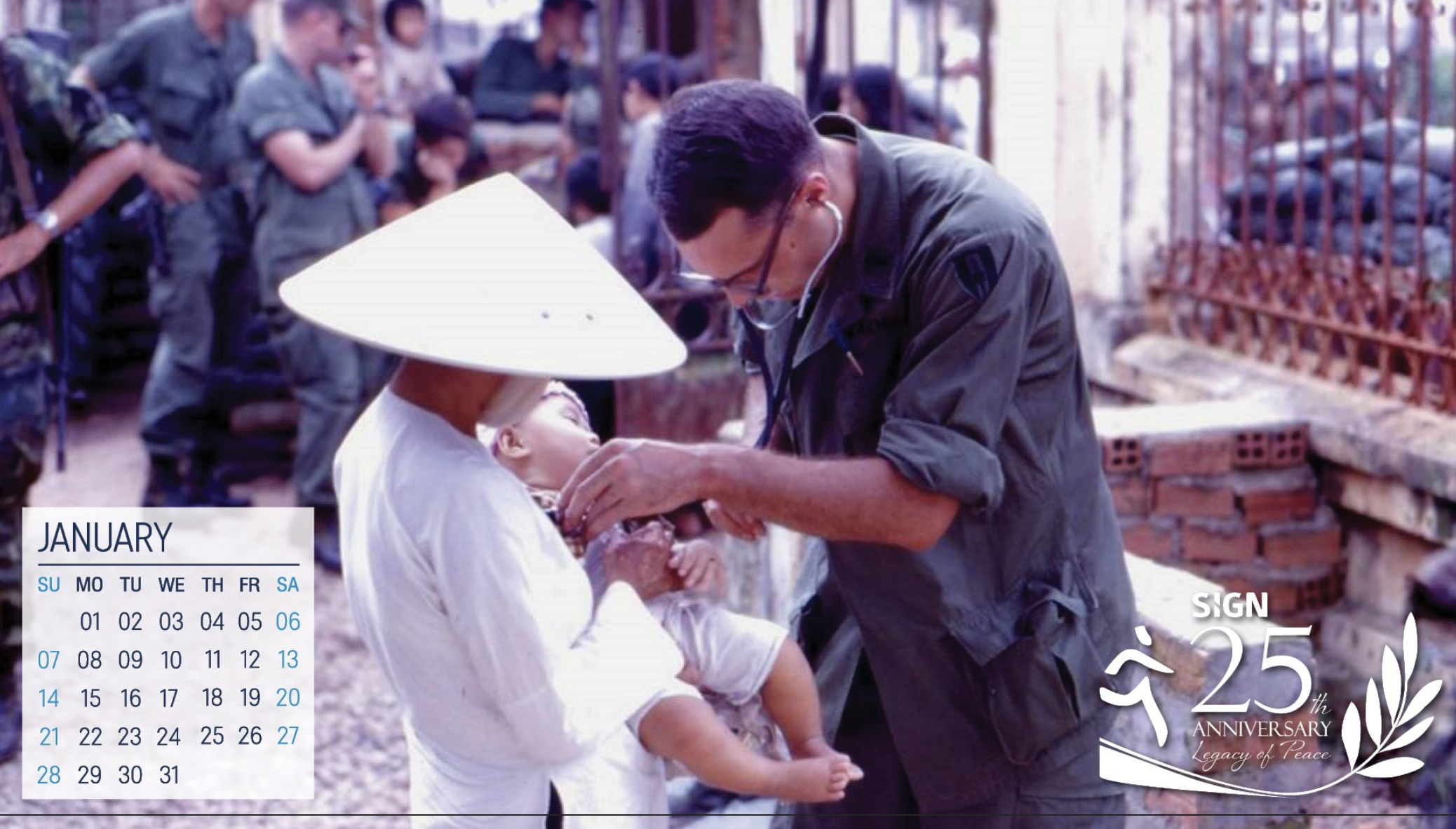SIGN Database Drives Innovation
If there is a secret that explains how SIGN has succeeded in supporting surgeons and helping more than 425,000 people heal over 25 years, it just might be the SIGN Surgical Database.
SIGN Surgeons in Ethiopia use the SIGN Database in consultations (2016).
Data and Reports
Data and reports aren't our usual talking points with donors, but managing our information and processes is crucial to keeping SIGN operating effectively and efficiently.
After each SIGN Surgery, surgeons upload x-rays, information about the procedure, and comments, which are reviewed by Dr. Zirkle or a team of SIGN Mentor Surgeons. Surgeons then provide follow-up reports at 6 and 12 weeks after surgery. Those reports are also reviewed by SIGN Mentors to verify patient healing.
Turning Feedback Into Innovation
An early version of the SIGN Database data collection program.
In exchange for uploading this information, SIGN sends resupply shipments of implants, instruments, and other materials to the surgeons—free of charge—after 20 case reports are submitted.
The SIGN Surgical Database is the largest long bone fracture database in the world, with more than 238,000 cases entered. It gives us the unique ability as a medical device manufacturer to get case data and user feedback directly from surgeons.
SIGN Engineers are able to research these cases, looking for trends or issues in surgical outcomes. The database also makes feedback from international surgeons more relevant and actionable, which drives SIGN’s innovation.
Current database entry form.
For example, one of the highlights of the annual conference is SIGN Staff getting to talk directly with surgeons about issues they are facing in their hospital. When a surgeon expresses a concern or idea, SIGN Engineers are able to compare that idea with thousands of other similar cases and determine how a new product or procedure could help surgeons provide better care for their patients.
Snail Mail to Mobile Phones
In 2001, SIGN began collecting data from surgeons, who would email surgery data to SIGN or, in many cases, mail a compact disc with case data each month.
With our partners CTTS, and later Stepframe, we created a web portal for surgeons to submit data, making the process significantly more efficient.
Today, SIGN manages the surgical database in-house, and our Information Technology team is constantly improving the portal to provide better access and usability for surgeons and staff.
What is the memory about SIGN that first comes to your mind? Perhaps it’s a patient, meeting with a surgeon, or something else in your life that sparked a connection with fracture care. We’d love to hear from you, and potentially share your story. Please comment below or email us at info@signfracturecare.org
In honor of SIGN's 25 years of healing, would you consider making a monthly gift of $25 or more?
Check the "Monthly" box and type in your gift amount on the donation form.
Discover more!
Throughout the year, remember your support of SIGN with background images for your computer or phone.
Discover events that shaped SIGN in a historical timeline.




